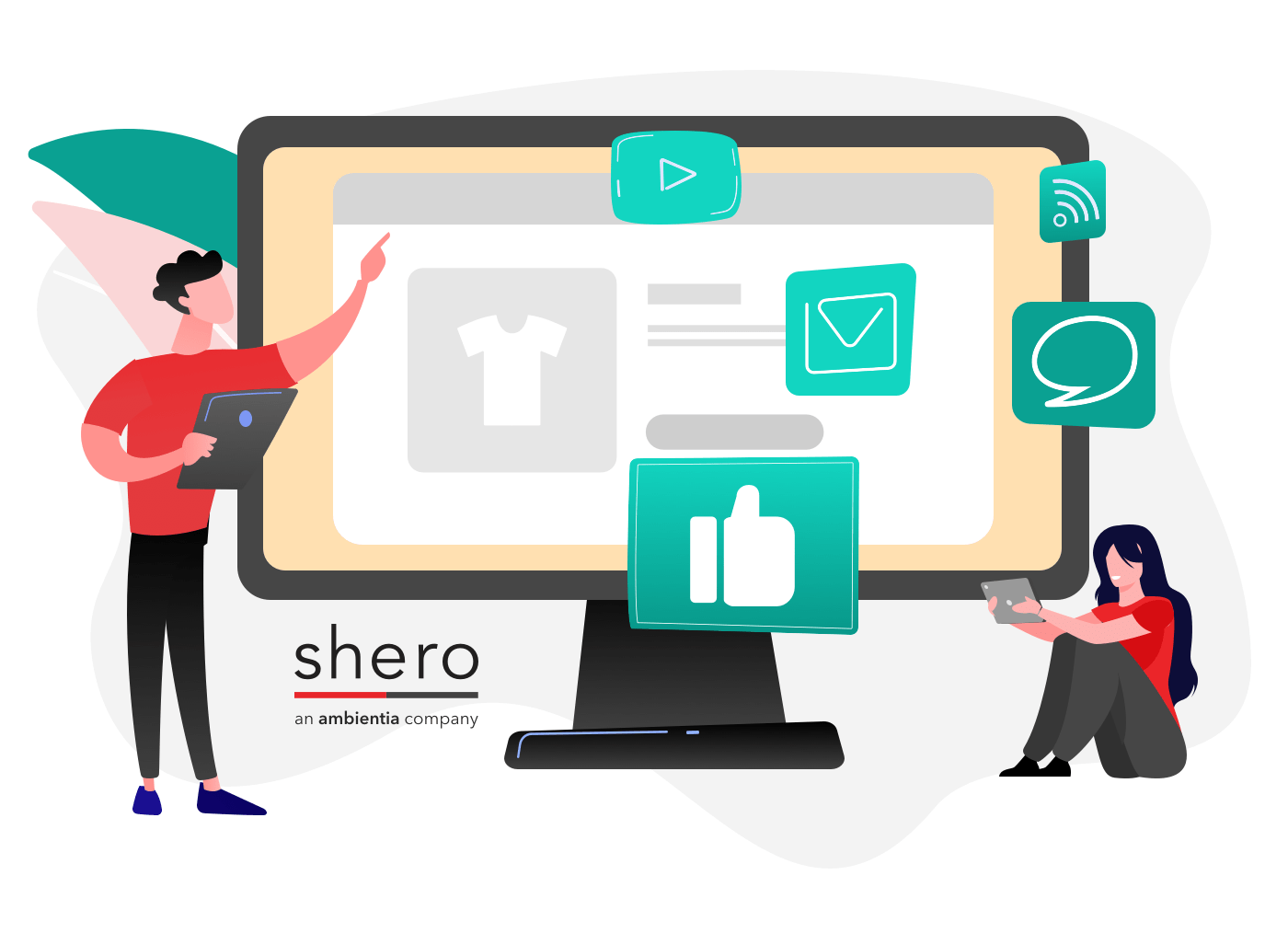For today’s article, Gauge’s Client Marketing Director DJ Henley interviewed Raphael Neff, owner and CEO of Chess House. For close to 20 years, Raphael and his team have been pursuing their goal of “Chess in every home” through their eCommerce business. Chess House sells unique chess and game resources to maximize each customer’s enjoyment of the game while providing a tool to build the mind and character.
Raphael came to Gauge in 2016 to explore a replatforming project. Chess House had been operating on the Volusion platform for more than 10 years, and they were ready to make a switch. Together, we determined that Shopify Plus could be a great fit for their needs.
On May 8, 2017, Gauge and the Chess House team launched their new Shopify Plus site. We recently sat down with Raphael to discuss his replatforming experience, and get his feedback on the benefits and challenges of his new Shopify system.
This interview was conducted via written questions and answers, with a follow-up interview by phone. We’ve condensed the answers and edited for clarity and grammar. Learn more about the specifics of the Chess House replatforming project here.
Q: Why were you interested in moving from Volusion to Shopify?
Raphael: With the innovative pace in eCommerce, I knew that it was essential to be on a technology platform that was not only thinking for the future, but also launching new functionality rapidly. We wanted to keep the benefits of a SaaS approach but also have a more efficient, simpler experience on a platform that was clearly innovating.
In 2005, Volusion was a great choice for our company. However, companies like Shopify have created a culture of innovation. They have welcomed developers into an app ecosystem that has multiplied the value of Shopify a thousand-fold.
Q: What were you hoping to gain with the move to Shopify?
Raphael: We were hoping to gain the freedom to market more creatively. We wanted access to the the latest integrations and marketing tools, and the freedom to design our marketing experience. For example, if you want to do retargeting, it’s much more efficient to plug an app into your site than to try to do it manually. Shopify makes that sort of marketing super efficient.
Q: Now that you’ve worked with both Volusion and Shopify Plus, what are the pros and cons of each? Is there a clear winner between the two?
Raphael: We’re approaching a year on Shopify Plus after over 10 years on Volusion, and I can say that Shopify is the absolute clear winner. While some things aren’t as robust or accessible, the simplicity and efficiency built into the core platform is far better. Shopify has really made the whole eCommerce marketing experience easier. We found we could give up Volusion’s extra detail in the interests of simplifying our marketing.
Volusion had fewer development shops and fewer resources. With Shopify there’s a whole network of Shopify Experts. It just shows that people are continually making it better.
In our 10 months on Shopify, I’ve seen many new feature additions and improvements that actually help our company.
“Shopify is delivering on innovation. They might not be doing it perfectly, but they’re doing it fast. I get updates every few weeks with “Here’s what we just improved. Here’s a new feature.”
Just before the holiday season when you don’t typically change things, they added a really cool live dashboard that showed insight into the whole shopping process: who’s on your site, where they are, the sales by the second, visits. It was pretty cool!
Q: Going into the project, it was clear that catalog management was a big concern for your team. How does managing the catalog in Shopify compare to Volusion?
Raphael: Volusion has quite a powerful catalog management tool; it has more fields and features. What Shopify offers is not nearly as comprehensive, but it’s more efficient.
A key example is with image uploading. With Volusion you could only upload one image at a time. In Shopify you can grab all of them, hit upload, drag ‘em around, and you’re done. And there are different ways to display those images with apps. You have a page that’s entirely flexible in terms of how images are displayed.
So Shopify isn’t nearly as robust as Volusion was, but what is there is efficient and it works well. Shopify could learn some key things from Volusion and make their platform even better.
Q: Chess House has a somewhat unique catalog structure because you let customers bundle products and kits together. Although Shopify Plus had some apps for product options, those didn’t work well for your needs. So we had to go a step further and use Shopify Scripts to get that functionality. How was that part of the project?
Raphael: Yeah, there was no great off-the-shelf solution or even a plug-and-play app that would work for us; we needed something custom-built. Shopify Scripts are only available on the Shopify Plus plan. That increased our monthly spend to about $2000 a month ($2500 after apps), rather than the $500-700 per month we spent on Volusion. Although it’s a stretch to pay this rate, the sheer power, efficiency, and flexibility we have is amazing.
Q: How has moving to Shopify impacted your customer service compared to Volusion?
Raphael: Again, Shopify has made our customer service more efficient.Volusion had more searchability, and the information was very accessible. Shopify doesn’t give you all of the information up front, but they give you what’s important.
Here’s an example. After an order has shipped, you can use the admin-wide search to type in the customer’s name, product, order number, etc. and find the order quickly. The order shows the tracking number and—get this—the estimated time of delivery. Being able to find that information without multiple clicks shows that a great deal of intentionality went into the interface.
For our team, the main improvement is that Shopify eliminates the bugs we had to deal with daily in Volusion. So that’s really a relief. For example, Volusion had a bug that made it difficult to handle multiple accounts with the same email address. It plagued our admins and customers for years. Shopify marries similar accounts quite seamlessly. We’ve also been able to plug in a CRM app called Reamaze, which works nicely with Shopify. When someone emails our customer support team, Reamaze gives us a lot of visibility into their customer history.
“We’re seeing increased time savings month after month since launch.
We’ve also been able to make user experience improvements with Hotjar. One of our team members watches Hotjar recordings like Netflix. They understand every part of the site, what people are doing, and where they’re struggling. We’re making changes based on that insight.”
So overall, for customer service, Shopify is a clear win. Of course, we are already seeing ways for it to improve, and we are watching the innovation priorities to get a sense of where Shopify is heading.
Q: How has moving to Shopify impacted the pick, pack, and ship workflow compared to Volusion?
Raphael: When we launched the new site we wondered if we needed an order management solution, and decided not to go that route. We wanted to avoid complexity and see if it could be done with Shopify only. Shopify’s out-of-the-box functionality is very different, but I wouldn’t rate it any better than Volusion because Shopify really could improve it.
Shopify does integrate with ShipStation well, but there are some kinks. ShipStation’s flow doesn’t work with our scenario. We’ve had to come up with our own tagging system and develop our own pick, pack, and ship process. That was the same with Volusion. It hasn’t been seamless and we’ve had to keep adjusting our process, but it’s working.
Q: How has moving to Shopify impacted marketing compared to Volusion?
Raphael: Moving to Shopify has opened up our marketing opportunities like nothing else. The built-in integrations and marketing tools are proving very helpful.
The main shift has been that we’re less focused on frustrations and things that aren’t working.
“Now we can actually design the marketing funnel to do what we want it to do. I’ve actually had to retrain myself to realize what’s possible.”
Shopify has a powerful API which allows for a lot of integration. For example, we can simply plug in an app like Shoelace, which is a great retargeting tool, and get it running by just configuring a few things.
Q: How does the Shopify app ecosystem compare to Volusion?
Raphael: Volusion doesn’t have an app ecosystem; you can only turn baked-in features on and off. Shopify has thousands of apps; the options are super extensive. We have about 25 apps installed right now. We remove what’s nonessential to improve our site performance.
I do think Shopify pushes apps as a solution a little too much; we’d rather see more functionality built into the core Shopify product.
Q: How does Shopify’s support compare to Volusion’s?
Raphael: Volusion support is available and they are great people. I just feel they are handicapped by the platform’s limitations. Shopify’s tech support has been very good; their response is rapid. Chess House is on the Plus plan, but I have another store that’s on a Basic Shopify plan, and tech support has been remarkably good for both.
Shopify also has a development support team, and they’ll take care of stuff for you if you don’t have your own developer. But in my case it didn’t work out well. It took a long time and I had to keep reclarifying issues. My recommendation would be to work with a Shopify Expert for development support.
Q: Anything that Volusion did well that you wish you still had with Shopify?
Raphael: We’d like to see more control over product bundling built into Shopify’s core functionality, so that Shopify Scripts wouldn’t be necessary. Shopify Script functionality is the reason we’re on Shopify Plus instead of a Shopify Basic plan. It’s a significant cost increase. But Shopify Plus has come with other benefits that we wouldn’t have realized had we gone with a Basic plan. I’m happy with where we are now, as long as we can continue to grow at a fairly good pace.
We’re definitely struggling with customer search. We’d like more visibility into customer accounts and better searchability for those. Even though Shopify’s search is efficient and works in most cases, sometimes when we really need to lean on it, it’s not working the way that we’d like. But if that’s the extent of our challenges, it proves that 99% of what we need and want out of Shopify is working remarkably well.
Q: Any other noteworthy comparisons?
Raphael: Shopify still needs to grow still in the area of inherent search optimization out of the box. Search is our #1 traffic source. We still have have fairly strong search traffic, but our numbers are down from where we were pre-launch. Increases in our revenue and conversion rates have been able to offset that. The Shopify Experts I’ve talked to tend to point out that Shopify is a bit weak on search optimization, but note that Shopify is making improvements.
Q: If you could go back in time to when you were researching Shopify, would you have any advice for yourself?
Raphael: Not particularly. We ended up in the right place. I don’t regret not switching sooner; our timing has been really good. A lot of the Shopify features that have been really beneficial for us were introduced fairly recently. In hindsight, some missteps could have been caught sooner, but it’s never going to be 100% perfect. I’m glad we made the shift, even though it was a huge undertaking.

Interested in Shopify?
We are Shopify Plus Partners and we are here to answer all of your questions and. Let us help you make the best decision on your next replatform project.




